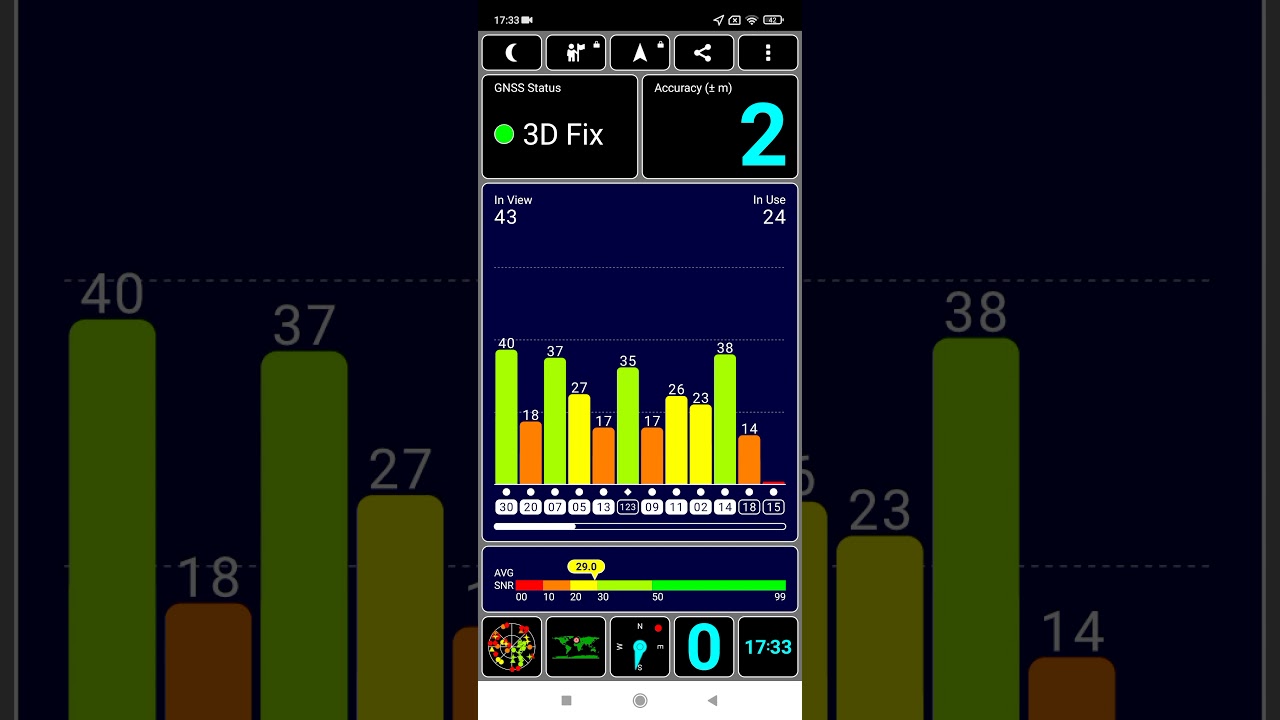Smartphones
Redmi 10: test / review
Published on: 05-10-2021 / Modified: 10-11-2022
Until a few years ago, entry-level phones from major brands (eg Samsung) were appallingly slow and offered a really limited experience. With the arrival of Xiaomi things have changed and where for 150 to 200 € you can buy a wheelbarrow from Samsung, Xiaomi offers you a bike with a nice bell.
The Redmi 10 (not to be confused with the Redmi Note 10) is an entry-level phone that could be mistaken for a mid-range phone from other manufacturers.
The Redmi 10 improves on the previous generation (Redmi 9) on many criteria. The Redmi 10 is slightly smaller and lighter without sacrificing the screen. Performance has improved slightly and for the photo, Xiaomi has integrated a Samsung sensor instead of the Omnivision sensor of the Redmi 9. Still no 5G in sight, in this price range it is rather the territory of the Poco brand. While waiting for the probable arrival of the Redmi 10A and Redmi 10C, the entry level at Xiaomi has found a new doorman.
Manufacturer web site:
https://www.mi.com
Site where I have bought the Redmi 10: https://s.zbanx.com/r/biYeYphkyzNT
Structure of my tests
I test the phones according to a pre-established structure (see below) to provide you with as much information as possible. Unfortunately, this takes a long time. Some tests like network performance tests take several days and for photo tests I sometimes have to wait until the weather is suitable to take pictures in good conditions. I am therefore obliged to publish the tests step by step, so I invite you to come back if the test is not complete at the time of your visit.Price Redmi 10
The list below shows the prices for the Redmi 10 from more than 50 sites around the world. If you are not satisfied with any price, you can subscribe to a price alert to be the first to be notified when the price drops.The above links are affiliate links from companies such as Amazon, Gearbest, Aliexpress,... If you appreciate my work, I would be grateful if you could purchase these products through these links. It costs you absolutely nothing but I get a small commission that allows me to buy the material I test. Thank you very much!
Timeline
September 27, 2021: Redmi 10 order on Goboo.com (introductory offer) October 4, 2021: I received the phone, the test can beginWhy this phone?
Price is a major criterion in choosing a phone, not everyone can afford an iPhone and Xiaomi understands this. I've bought almost every Xiaomi brand model this year so couldn't miss the opportunity to test out their new entry-level phone as I'm pretty sure it's going to be a hit.When testing a lot of phones we tend to compare everything to good experiences and since the entry level cannot compete with the high end these phones receive a bad note. However, I try not to fall too much into this trap by evaluating the qualities of this kind of phone according to its selling price. I suspect that the Redmi 10 will be less powerful and produce poorer photos than the top of the range, so I'm just going to share an experience so you can pass judgment on this phone.
Unpacking
The box contains the bare minimum, namely the phone, a charger, a USB cable, a manual, a semi-transparent silicone protection and a needle to open the sim drawer.
First configuration
The Redmi 11 runs under MIUI 12.5 out of the box, it is the last version of the Xiaomi overlay which is based on Android 11. The entry level is therefore not disadvantaged compared to other Xiaomi phones . The first contact with MIUI 12.5 goes through the configuration screens which have been revamped, the interface is more graphical and more pleasant to use, Xiaomi is moving away from the basic interface offered by Android. The configuration is very simple, in 2-3 minutes max the phone is operational.The new interface is therefore a success, but it is another opportunity for Xiaomi to try to register for its cloud and they are each time smarter to get there. Read carefully what is displayed on the screen, if you are asked to log in with your Google account or your Xiaomi account, you can skip this step otherwise with one click you will register for the Xiaomi cloud. There is nothing wrong with that but if you don't want to, don't get trapped.
Finish
Specifications
The information below comes from the Device Info HW application. The application provides detailed technical information about the tested phone. I bought the Redmi 10 in its 4Gb / 64 Gb version (white version), you will find the technical characteristics in the following screenshots.
If I had to go over the basics, I would say:
- 2400x1080 screen where many entry-level phones are limited
- accelerometer, magnetometer, gyroscope
- Mediatek architecture (good for GPS, Galileo support)
- Samsung sensor of 50 million pixels on the back
CPU / GPU Performance
The Redmi 10 is based on a Mediatek Helio G85 CPU, it is an entry-level processor that will offer performance to a Poco M3 or a Redmi Note 9. For the graphics part it is based on the Mali GPU G52 is a GPU found in many entry-level phones. It is not a GPU for gamers but you will be able to play simple games without problems.
Benchmark Antutu/3DMark
The Redmi 10 is not intended to obtain a very high score on Antutu, I obtained a little less than 200,000 points and that places this phone at the level of the Redmi Note 9. With this level of performance, you have a sufficiently responsive phone for all everyday tasks. If you have to run big apps or want to play big games, the phone will be slower and less responsive.Gaming
To test the performance in game, I download the mobile PUBG game and evaluate the in-game experience, graphics level and depth of vision. This game is quite demanding and should help you evaluating the performance of a phone.

Network performance
Xiaomi has standardized the support of 4G frequencies on most models on sale, I no longer notice big differences as was the case before. The Redmi 10 covers the vast majority of 4G frequencies used in Europe (including the B28 in 700Mhz)Signal 4G (before december 2020)
The ability to pick up the network correctly is an essential element for a phone but it is only very rarely measured. To measure a phone's ability to pick up the network, I perform a large number of measurements on the same cells to be able to compare phones under similar conditions. The signal is measured in dBm, a value of -90dBm indicates a worse signal than -70dBm. These measurements are therefore taken under real conditions and not in a laboratory, they are not scientific but give a good indication of performance.
Signal 4G (from December 2020)
I decided to change the methodology for measuring the network because I noticed that the configuration of the mobile network changes over time. This makes it more difficult to compare phones because the conditions are no longer exactly the same.
To overcome this problem, I set up a device that captures 24 hours a day about ten parameters from the mobile network (ex: cell id, rssi, rsrq, snr, frequency,...). I then place the phone next to the device for 24 to 48 hours taking the same measurements so that I can compare them.
Overview of the phones tested with this methodology
I performed over 2000 measurements to assess the network sensitivity of this Redmi 10. I performed more measurements than usual because I simply forgot to remove the phone from my test area. This is not a big deal, it makes the measurements even more reliable. I got an average signal of about -100 dBm, it is not a priori a very good signal but I cannot look at it in isolation and that is why I use a parallel probe to measure the quality of the network. The probe obtains a signal around -94 dBm. This signal level shows that the network was a little degraded during the test because I generally get a better signal but it also shows that the gap with the Redmi is quite large despite everything. With around 6 dBm of difference, the Redmi ranks in the low middle of the table, so it's not a phone that I recommend for people who live in a place where the network coverage is not very good.
Download/Upload speed
To test the download speed, I have identified some 4G cells offering good performance where I test all my devices several times to see what download and upload speed they can achieve.
Wifi performance
To test a phone's ability to receive the network properly, I take measurements near my router and then remotely (and always at the same place). This gives me an average in dBm where a value of -90 dBm indicates poorer performance than a value at -30 dBm.Wifi signal
I measured a -21dBm signal near the router and a -65dBm signal at a distance. I have tested phones with better sensitivity but this score is quite correct, it is even in the high average.
Download/Upload speed
To test the speed in Wifi, I connect to my router in 2.4Ghz and 5Ghz (if available) and use the Ookla application to measure the speed.
GPS performance
To test the quality of the GPS signal I use the Offline Maps application and I make the same train trip in pedestrian mode. Why? In pedestrian mode, the GPS does not artificially correct the signal to stick to the road, it has no markings, so you can see the actual position. I then use an application to measure the accuracy of the signal.

Battery range
I loaded the Redmi 10 from 0 to 100% in 165 minutes, it is an average loading speed but I noticed a strong slowdown on the last 20 percent and it can be seen strongly on the following graph.I got a runtime of 664 minutes with the screen brightness at 100% and 1684 minutes with the brightness at 50%. The phone's energy efficiency at 100% is average, so the battery life is good and will give you 2-3 days of battery life in normal use if you find your balance between 50 and 100% brightness. The screen isn't overly bright at 100% but 2.5x better battery life at 50%, so you'll have to find the balance that's best for you.
Photo camera test
To test the quality of photos produced by a phone, I do a technical test (resolution, sharpness, chromatic aberration,...) in studio (identical conditions) to evaluate the technical part objectively. From the second half of 2020, I built my own laboratory to take completely objective technical measurements. I then take pictures in real conditions to see how the camera performs. I then evaluate these photos according to my criteria but I publish the photos so that you can evaluate the result according to your criteria.Hardware
The Redmi 10 is equipped with a Samsung S5KJN1 main sensor, it is an entry-level sensor that I have not yet had the opportunity to test on another smartphone. It is currently only available on the Redmi 10 and Realme Narzo 50A (only for India). The ultra wide angle sensor is a Sony IMX 355 that I have had the opportunity to test many times, it also has a portrait sensor of 2 million pixels and an anecdotal macro sensor of 2 million pixels.It can shoot in 4k 30 fps and can also shoot in slow motion at 120 fps.
Default app
The default app is exactly the same as on the other Xiaomi launched this year. The interface has been simplified with MIUI 12 and that's a good thing, it is still possible to dig into the options but they no longer clutter the screen as before. I noticed a little hesitation in focusing where the focus is instantaneous.
Photo quality
Photo test / studio
Main sensor: Samsung S5KJN1
The AI mode does not seem to take too much liberty with the colors and I do not see a very spectacular effect at the HDR level, it may be better seen in photos taken outdoors.
Ultra-wide-angle sensor: Sony IMX 355
Photo test / sunny
Technical test
For my technical tests, I test the following criteria: sharpness at center, edge sharpness, color fidelity, chromatic aberration and dynamic range. These tests are carried out in a controlled environment to allow a comparison between the different phones tested.
Sharpness
For the main sensor, I get a good sharpness in the center (neither too much nor too little) and a sharpness up to 3 times worse near the edges . For the secondary sensor, the sharpness in the center is not very good, it more or less corresponds to the sharpness of the edges of the main sensor. The secondary sensor is about 3 times less sharp than the main sensor.
Colorimetry
I got a dE of 12.83 for the main sensor and a dE of 10.11 with the secondary sensor. These are significant differences which will result in a deviation on certain colors. I notice here that the secondary sensor offers more faithful colors than the main one. These (dE) scores may seem high because the human eye can see a color difference from a dE of 3 but the best phones I have tested have a dE between 8 and 9, this Redmi's score isn't so is not too bad.
Dynamic range
Dynamic range allows you to capture dark and bright areas without losing information. The main sensor has a dynamic range a little below average, it is the same for the secondary sensor. In outdoor photos, this can be seen because you can barely make out the cloud texture when the light is not good enough.
Chromatic aberration
I detected the presence of chromatic aberrations on both sensors but the impact was quite limited.
Photo test / cloudy
Not yet available / tested
Test photo / night
Not yet available / tested
Video quality
Stabilisation

Video normale conditions

Video low light
Not yet available / tested
Audio quality
To test the quality of the phone's audio output, I connect the device's audio output to a measuring tool, then play sounds on all frequencies and measure the differences between the original sound and the sound produced by the phone. In this way I measure the phone's ability to correctly reproduce all sounds.Frequency Response
This test is intended to test the device's ability to correctly reproduce all frequencies. The white line in the middle of the graph is the ideal situation and the other colors come from tests on different phones. A deviation from the reference line indicates a deviation from the ideal situation. To see good sound at all frequencies, it is therefore necessary to get as close as possible to the reference line.
Dynamic Range
This test is designed to test a phone's ability to play sounds at different volume levels. Here too, the phones must be as close as possible to the reference.
Noise Level
This test aims to identify if the device under test is able to reproduce sounds without too much noise. A high score indicates a low parasite rate, a lower score indicates a higher presence of parasites.
Screen quality
To test the screen, I use a colorimetric probe that measures the color accuracy of a screen, as well as other parameters to see if a screen is able to correctly reproduce an image. I also test the brightness level to determine if the screen will be able to display an image in full sunlight.Colorimetry
The temperature of the white is 6628K, it is a value quite close to the standard, the white is therefore very white and not bluish like on some phones.
Brightness / Contrast
I measured a brightness of 372 cd / m² by flooding the front sensor with light and I find this measurement strange as Xiaomi displays are generally brighter. I tried varying the light input in case the light sensor was positioned otherwise but failed to get more. This brightness is sufficient for use at home or in a covered place, but in direct sunlight, the screen will not be easily read.
I measured a contrast of 1278: 1, it is an average contrast for this kind of screen type. If you are used to using an LCD type screen, you will not find any problems. On the other hand, if you come from an Amoled screen, the low contrast will be very noticeable.
Biometry
Not yet available / testedOperating system
Not yet available / tested
Encoutered bugs
Not yet available / testedAccessories Redmi 10
Compare Redmi 10 with the others
Test / Review conclusion
I still have to publish some results but in order not to make you wait, I will already write the conclusion. The Redmi 10 is an entry-level phone, if you keep this point in mind, the rest of the conclusion will make more sense to you.
The first thing that surprised me with this phone is its finish because even if this phone is mostly made of plastic, the level of finish is above what Xiaomi has the used to produce for its entry-level phones. I bought the white version and find this phone to be quite stylish. Its photo block may be a bit too much on the back but it's the same for most phones in this price range
This Redmi 10 is not a champion in anything at all, but I can't really find fault with it. The quality of the photos and videos is average, the sensitivity to the network is average, the wifi speed is average, the performance is average, the sound quality is good, only the GPS stands out from the average with an accuracy level of 1 meter.
Xiaomi has mastered the production of phones with good value for money and therefore when the price drops, Xiaomi uses average components but still manages to stay ahead of most of the others phones in the same price range. The Redmi 10 offers performance comparable to a Samsung Galaxy A32 by costing 100 € less and it is especially at Xiaomi that you have to find competitors. Phone prices have gone up considerably in recent months and a phone like the Redmi Note 10 that I bought for € 150 now costs € 100 more. This frees up the competition for the Redmi 10 a bit for those who don't want to pay more than 200 € but if you are willing to pay a little more I would recommend the Redmi Note 10 which is a much more balanced phone over just about all. the points tested on my site.
Strengths
GPS accuracy
Battery life (with screen at 50%)
Finish
WiFi fast enough for streaming
Screen
Weaknesses
Average photo / video quality
Screen brightness not
Average 4G network sensitivity
Alternatives to this product
Not yet available / tested
 LAURENT WILLEN
LAURENT WILLENHead of myself on this blog
I share my passions on my blog in my free time since 2006, I prefer that to watching nonsense on TV or on social networks. I work alone, I am undoubtedly one of the last survivors of the world of blogs and personal sites.
My speciality? Digital in all its forms. I have spent the last 25 years working for multinationals where I managed digital teams and generated revenues of over €500 million per year. I have expertise in telecoms, media, aviation, travel and tourism.










































Questions/Comments